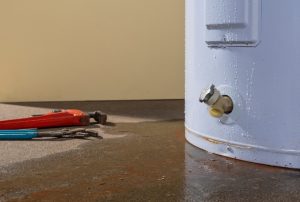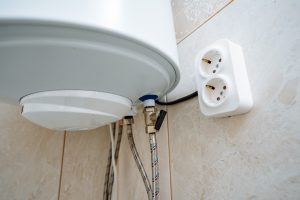When it comes to insulation options for your home, deciding between spray foam insulation and blown-in insulation is a common dilemma for homeowners. Both effectively enhance energy efficiency and improve comfort, but each has distinct advantages and disadvantages.
Understanding these key differences can help you make an informed choice that best fits your home’s needs.
In this post, we’ll explore the five key differences between spray foam insulation and blown-in insulation, providing essential insights into choosing the right product for your upcoming new home project.
What is Insulation, and Why Does it Matter?
Before going over the specifics of spray foam insulation vs. blown-in insulation, it’s essential to understand why insulation is crucial for your home. Insulation helps prevent heat transfer and maintains a comfortable temperature by regulating heat flow.
For example, choosing the right attic insulation solutions enhances your home’s energy efficiency. Since the attic is a significant source of heat loss or gain, it directly impacts both comfort and energy expenses.
Heat transfer occurs through three primary methods:
- Conduction: Heat flows through solid materials, like studs or walls.
- Convection: Heat is transferred through air or water, which can be mitigated by sealing air leaks.
- Radiation: Heat travels in waves, such as sunlight.
Insulation acts as a barrier against these heat transfer methods, making it essential for maintaining an energy-efficient home. It helps trap heat in the winter and keeps your home cooler in the summer.
This improves comfort and reduces the strain on your HVAC system, which can help you reduce your energy bills. Effective insulation helps maintain proper air flow, reducing the need for constant temperature adjustments.
Spray Foam Insulation: The Expanding Solution
Spray foam insulation is one of the most advanced insulation options available today. It is typically made from polyurethane foam and expands when applied, filling even the tiniest cracks and gaps in wall cavities, nooks, and joists.
Benefits of Spray Foam Insulation
Spray foam insulation is known for its high performance in sealing areas where traditional insulation may fall short. The key benefits include:
- Superior Air Barrier: One of the standout features of spray foam is its ability to act as an air barrier. Once applied, it expands and hardens, filling every crack and crevice. This makes it incredibly effective at preventing drafts and ensuring that conditioned air stays inside the home.
- Higher R-Value: Spray foam offers a higher R-value than other insulation materials. The R-value indicates how effectively an insulation material resists the flow of heat; the higher the R-value, the more efficient the insulation is at preventing heat transfer.
- Mold Resistance: Closed-cell spray foam has moisture-resistant properties, helping to lower the chances of mold growth, particularly in basements and attics.
- Longevity: Spray foam is durable and doesn’t settle over time, maintaining its insulating properties for many years. Unlike traditional batt insulation, which may lose effectiveness over time, spray foam stays in place.
- Soundproofing Properties: Spray foam also offers soundproofing benefits by reducing noise transmission between rooms. Its expanding nature fills gaps, making it an excellent choice for reducing noise in homes located in noisy areas or near busy streets.
Drawbacks of Spray Foam Insulation
Despite its impressive benefits, spray foam insulation does come with some downsides:
- Cost: Spray foam tends to cost more than blown-in insulation, both in terms of material costs and installation. The equipment required for spraying foam also contributes to the higher cost.
- Installation Complexity: The installation of spray foam requires professional expertise. Poor installation often leads to gaps or uneven application, reducing its effectiveness.
- Environmental Impact: Some spray foam products may contain chemicals that are not environmentally friendly, although eco-friendly options are available.
Blown-In Insulation: The Versatile Choice
Blown-in insulation, also known as loose-fill insulation, is made from small particles that are blown into place using specialized equipment. The material options for blown-in insulation include fiberglass, cellulose, and mineral wool, each with unique properties.
Benefits of Blown-In Insulation
Blown-in insulation is popular for its ability to reach tight and hard-to-access spaces. Its key advantages include:
- Easy Installation: Blown-in insulation can be installed quickly and easily using blower machines, making it less labor-intensive than spray foam. This can result in lower installation costs. It is also easier to install in larger areas like attics than the more intricate spray foam application process.
- Cost-Effective: In general, blown-in insulation is more affordable than spray foam insulation, making it an excellent choice if you are concerned about upfront costs. It’s a great option for homeowners who want to improve their insulation without spending much money.
- Eco-Friendly Options: Many blown-in insulation materials, such as cellulose, are created from recycled materials, making them an environmentally friendly choice. Blown insulation is a more sustainable option, especially when using cellulose made from recycled paper.
- Effective for Existing Homes: Blown-in insulation can be applied over existing insulation, making it an excellent choice for retrofitting homes or adding an extra layer without removing old material. This can save time and money, especially in large spaces.
- Large Area Coverage: Blown-in insulation can efficiently cover large areas, like attics, with minimal disruption. It is ideal for large, open spaces that need to be insulated quickly and efficiently.
Drawbacks of Blown-In Insulation
While blown-in insulation is a popular option, it also has some limitations:
- Settling Over Time: One of the main drawbacks of blown-in insulation is that it tends to settle over time. This can reduce its R-value and require periodic top-ups to maintain its effectiveness.
- Susceptibility to Moisture: Some types of blown-in insulation, particularly cellulose, can absorb moisture, which can lead to mold growth and reduced insulation effectiveness in damp conditions.
Installation Mess: Blown-in insulation can create a mess during installation, especially if installed in an attic or difficult-to-reach space. To get a better idea of the best attic insulation materials for your needs, consulting a professional can provide valuable guidance.
Comparing Cost: Spray Foam vs. Blown-In
Cost is often a major consideration when deciding between spray foam insulation vs. blown-in insulation. Here’s a general breakdown of the cost factors:
- Spray Foam Insulation: Generally more expensive, with prices ranging from $1.50 to $3.00 per board foot, depending on whether open-cell or closed-cell foam is selected.
- Blown-In Insulation: More affordable, with prices typically ranging between $1.00 to $2.00 per square foot, depending on the material chosen.
Although spray foam insulation provides exceptional energy efficiency and long-term advantages, blown-in insulation remains a cost-effective choice for many homeowners, especially those looking to insulate an attic or other large space.
Which Insulation is Right for Your Home?
The decision between spray foam insulation vs. blown-in insulation depends on several factors:
- Budget: If you have a larger budget and need top-tier performance, spray foam insulation may be the way to go. However, blown-in insulation is a great alternative if you’re looking for a more economical solution.
- Home Type and Insulation Needs: Spray foam may best fit small gaps, hard-to-reach areas, or a high-performance air barrier. On the other hand, blown-in insulation can efficiently cover a large area, like an attic, if you want to insulate a large area.
- Long-Term Goals: Consider how long you plan to stay in your home and how much you value long-term energy savings. Spray foam provides better overall insulation, while blown-in insulation may need periodic maintenance due to settling.
Conclusion
Choosing between spray foam insulation and blown-in insulation depends largely on your home’s specific needs and your budget. While spray foam offers higher R-values, better air sealing, and long-term durability, blown-in insulation is a more affordable and eco-friendly option with good energy efficiency. It’s advisable to consult a professional insulation contractor to ensure you choose the best option for your home.
At American Home Water & Air, we understand that insulation is a significant investment. Whether you’re leaning toward spray foam or blown-in insulation, we’re here to help you make an informed decision.
Contact us today for more information or to schedule a consultation!














